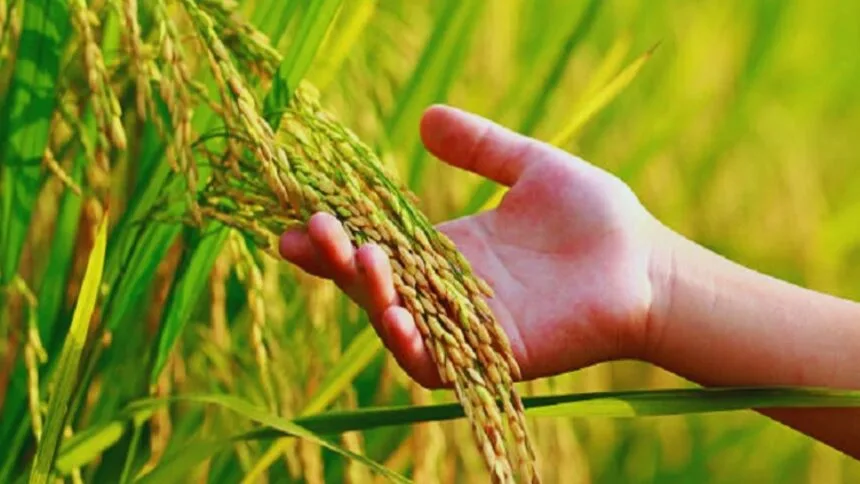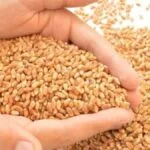Main Points In Hindi (मुख्य बातें – हिंदी में)
-
चक्रवात डैना का भारी प्रभाव: ओडिशा में चक्रवात डैना का प्रभाव विशेष रूप से किसानों और उनकी फसल पर होने की आशंका है, खासकर जब कि तटीय जिलों में बड़े पैमाने पर धान की खेती होती है। चक्रवात के कारण भारी बारिश और तेज़ हवाओं से धान की फसल को गंभीर नुकसान हो सकता है।
-
कृषि वैज्ञानिकों की सलाह: राष्ट्रीय चावल अनुसंधान संस्थान (NRRI) के वैज्ञानिकों ने किसानों को सलाह दी है कि वे स्थिति के बारे में चिंता न करें, बल्कि सच्चाई से सलाह का पालन करें। फसलों के पानी में डूबने से बचाने के लिए खेतों में पानी के निकासी के लिए नालियों को खुला रखें।
-
धान की सुरक्षित भंडारण की विधियाँ: वैज्ञानिकों ने harvested चावल को सुरक्षित स्थानों पर सही तरीके से रखने और लंबे समय तक बरसात से हुम के लिए तरपाल से ढकने की सलाह दी है।
-
नमी कम करने के उपाय: बारिश रुकने के बाद, किसानों को धान के अनाज को एक या दो दिन धूप में सूखने देने के लिए कहा गया है ताकि नमी कम हो सके, और फिर उन्हें उच्च गुणवत्ता के बैग में भरना चाहिए।
- भंडारण में कीट नियंत्रण: भंडारण में संक्रमण के मामले में, चावल के बैग को एल्युमिनियम फास्फाइड के साथ एयरटाइट कंटेनरों में रखना चाहिए। इसके अलावा, खेतों में किटों और अन्य कीड़ों के लिए भी सावधानी बरतने की सलाह दी गई है।
Main Points In English(मुख्य बातें – अंग्रेज़ी में)
Here are the main points regarding the impact of Cyclone Dana on farming in Odisha:
-
Severe Impact on Paddy Crop: Cyclone Dana is expected to have a significant negative effect on paddy cultivation in Odisha, particularly impacting farmers in the coastal districts where paddy is primarily grown. Strong winds and heavy rains could lead to crop destruction and waterlogging.
-
Precautionary Measures Recommended: The National Rice Research Institute (NRRI) has advised farmers to take precautionary measures such as keeping drainage systems open to prevent waterlogging and properly storing harvested rice to protect it from moisture damage.
-
Post-Rain Strategies: After the rains, farmers should dry the paddy grains in sunlight to reduce moisture and properly package them in high-quality bags. This will help maintain the quality and prevent spoilage of the grains.
-
Fumigation for Stored Grains: For any stored grains affected by infection, scientists recommend using aluminum phosphide for fumigation in sealed conditions to control pests, ensuring the grains remain safe for consumption.
- Monitoring Fields for Pests: After the cyclone, farmers should also be vigilant about potential pest infestations, such as caterpillars and brown plant hoppers, particularly in fields with late-sown crops.


Complete News In Hindi(पूरी खबर – हिंदी में)
ओडिशा में चक्रवात डाना का भारी असर देखा जा रहा है। इसका सबसे बड़ा प्रभाव किसान और उनकी फसल पर पड़ने की संभावना है। ओडिशा के तटीय जिलों में धान की खेती बड़े पैमाने पर की जाती है। ऐसे में, चक्रवात की वजह से धान की फसल के नष्ट होने का खतरा है। चक्रवाती तूफान के दौरान तेज़ बारिश और हवाओं के कारण धान के पौधे गिर सकते हैं और क्षतिग्रस्त हो सकते हैं। इसे देखते हुए कई वैज्ञानिकों ने किसानों को फसलों को बचाने और कटाई के बाद रखी गई उपज की रक्षा के लिए एहतियाती उपाय अपनाने की सलाह दी है।
राज्य के कम से कम आठ जिले – गंजाम, पुरी, जगतसिंहपुर, जाजपुर, केंद्रपाड़ा, भद्रक, बालासोर और मयूरभंज – में भारी बारिश होने की संभावना है और इन क्षेत्रों में धान की खड़ी फसलें जलमग्न हो सकती हैं। इसे ध्यान में रखते हुए भारतीय कृषि अनुसंधान परिषद के अंतर्गत राष्ट्रीय चावल अनुसंधान संस्थान (NRRI) ने एक सलाह जारी की है, जिसमें वैज्ञानिकों ने धान की खेती करने वाले किसानों से फसल के नुकसान को कम करने के लिए एहतियात बरतने की अपील की है।
वैज्ञानिकों की सलाह
NRRI के निदेशक डॉ. एके नायक ने कहा कि किसानों को स्थिति को लेकर घबराने की जरूरत नहीं है और सलाह पर ईमानदारी से अमल करना चाहिए। वैज्ञानिकों ने किसानों को सलाह दी कि वे खेतों में अतिरिक्त पानी निकालने के लिए नालियां खुली रखें, ताकि पानीभराव के कारण होने वाले नुकसान को कम किया जा सके। “कटे हुए चावल को भी सुरक्षित स्थानों पर सावधानी से स्टोर करें और लंबे समय तक बारिश के कारण नुकसान से बचने के लिए टारपोलिन से ढक लें,” सलाह में कहा गया है।
वैज्ञानिकों का यह भी कहना है कि बारिश रुकने के बाद किसानों को तुरंत धान के दानों को एक या दो दिन तक धूप में सूखाना चाहिए ताकि नमी को कम किया जा सके और फिर उन्हें गुणवत्ता वाली बैग में भरकर लंबे समय तक उनके गुणवत्ता, बनावट और नमी को बनाए रखा जा सके। रंग, सुगंध और स्वाद बनाए रखना जरूरी है।
सलाह में कहा गया है, “यदि संग्रहीत अनाज में कोई संक्रमण होता है, तो अनाज की थैलियों को एल्युमिनियम फॉस्फाइड के साथ अच्छी तरह से बंद कंटेनरों में रखने की सलाह दी गई है और इन्हें मोटे टारपोलिन से ढक कर कम से कम सात से दस दिन तक रखना चाहिए।” “फ्यूमिगेशन के लिए टैबलेट का उपयोग करना आवश्यक है।”
उपज की फ्यूमिगेशन जरूरी
एल्युमिनियम फॉस्फाइड का उपयोग कीड़ों और चूहों आदि को नियंत्रित करने के लिए किया जाता है। “जिन खेतों में फसलें देर से बोई गई हैं, उनके लिए बारिश के बाद कैटरपिलर और ब्राउन प्लांट होपरों के झुंडों पर भी ध्यान दिया जाना चाहिए,” सलाह में कहा गया है।
वैज्ञानिकों की यह सलाह चक्रवात डाना के पुरी तट के निकट खतरे के समय आई है। इस चक्रवात की हवा की गति 120 किमी प्रति घंटा होगी और भारी बारिश भी होगी। ओडिशा के अलावा, बंगाल में भी ऐसे मौसम का पूर्वानुमान है। धान की फसल ओडिशा में मुख्य फसल है, जो चक्रवात डाना के खतरे में है। वर्तमान में फसल खड़ी है, जबकि कुछ किसानों ने धान काटकर उसे अपने भंडार में रख लिया है। ऐसी स्थिति में, वैज्ञानिकों ने उपज को बचाने के लिए सलाह दी है।
Complete News In English(पूरी खबर – अंग्रेज़ी में)
Heavy impact of Cyclone Dana can be seen in Odisha. The biggest impact is likely to be on farmers and their farming. Paddy is cultivated on a large scale in the coastal districts of Odisha. In such a situation, the paddy crop is on the verge of destruction due to the cyclone. Paddy plants can fall and get damaged due to heavy rains and strong winds during a cyclonic storm. In view of this, many scientists have advised to adopt precautionary measures to save the standing crops in the fields and to protect the produce kept after harvesting.
At least eight districts of the state – Ganjam, Puri, Jagatsinghpur, Jajpur, Kendrapara, Bhadrak, Balasore and Mayurbhanj – are likely to receive heavy rains and standing paddy crops in these areas may get submerged. In view of this, the National Rice Research Institute (NRRI) under the Indian Council of Agricultural Research has issued an advisory, in which scientists have appealed to the farmers cultivating paddy to take precautionary measures to reduce crop losses.
Scientists gave advice
NRRI Director Dr AK Nayak said that farmers should not panic about the situation and follow the advice honestly. Scientists have asked farmers to keep drains open for drainage of paddy crops, so that excess water can drain from the fields and the damage caused by waterlogging can be reduced. “Harvested rice should also be stored properly in safe places and covered with tarpaulin to avoid damage due to prolonged rains,” the advisory said.
Also read: Wheat Price: Bumper production, adequate government stock…then why is the price of wheat increasing?
Scientists advise that after the rains stop, farmers should immediately dry the paddy grains in the sun for one or two days to reduce moisture and then fill the grains in good quality bags to maintain their quality, texture, and moisture for a long time. Color, aroma and taste should be maintained.
The advisory states, “In case of infection in stored grains, store the grain bags with aluminum phosphide in fairly airtight containers by covering them with thick tarpaulin without any gap or leakage for at least seven to ten days for better results.” “Fumigation using tablets is required.”
Fumigation of produce is necessary
Aluminum Phosphide is used as fumigation to control insects and rats etc. “In fields where crops have been sown late, attention should also be given to swarms of caterpillars and brown plant hoppers after the rains,” the advisory said.
Also read: Farmers found a cheap and sustainable solution for stubble, it is also effective in increasing income.
This suggestion of scientists has come at a time when there is a threat of Cyclone Dana on the Puri coast of Odisha. Winds from this cyclone will blow at a speed of 120 km per hour. There will also be heavy rain. Apart from Odisha, such weather has also been predicted in Bengal. Paddy crop is the main crop in Odisha which is under threat of cyclone Dana. Right now the ready crop is standing in the fields while some farmers have harvested the paddy and kept the produce in the barns. In such a situation, scientists have issued advice to save the produce.


 By
By 





